Unhook Thyself! Safe, Painless Hook Removal
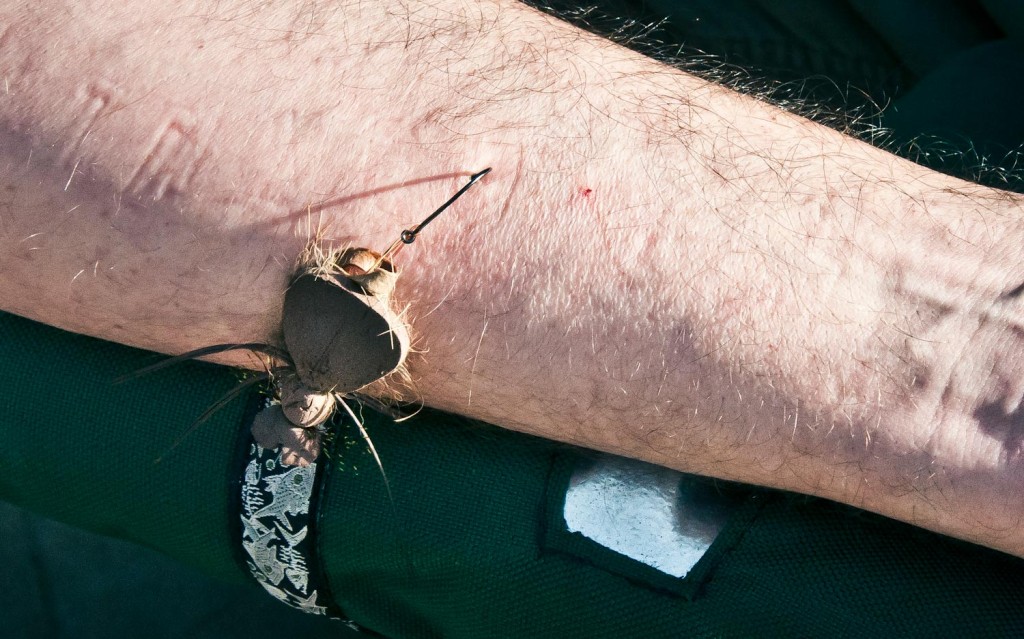
IF YOU’VE BEEN THINKING, “I LOVE GINK AND GASOLINE BUT I WISH IT COULD BE MORE LIKE JACKASS”, THEN TODAY IS THE DAY YOUR DREAMS COME TRUE!
There are two kinds of fishermen. The ones who have hooked themselves and the ones who are about to. It’s a bad feeling the first time you put a big streamer hook in yourself past the barb. You feel pretty helpless if you don’t know how to handle it. I’ve done it many times and I’m here to tell you that there is an easy, and even painless, way to get that hook out. As a veteran guide Kent has had to do it plenty and he’s a master. He’s taken hooks out of clients without them even knowing it was done.
We’ve been wanting to do this video for some time. We kept waiting for one of us to get hooked but it hasn’t happened so on a recent float on the South Holston with the guys from Southern Culture on the Fly and Bent Rod Media I decided to take things in hand and hook myself so we could show you how to deal with it. I have to say, it was harder to get that hook in past the barb than I thought. If you listen closely you can hear Dave Grossman of SCOF almost lose his lunch.
So watch and learn and please,
Read More »Thank You God for the Terrestrial Season
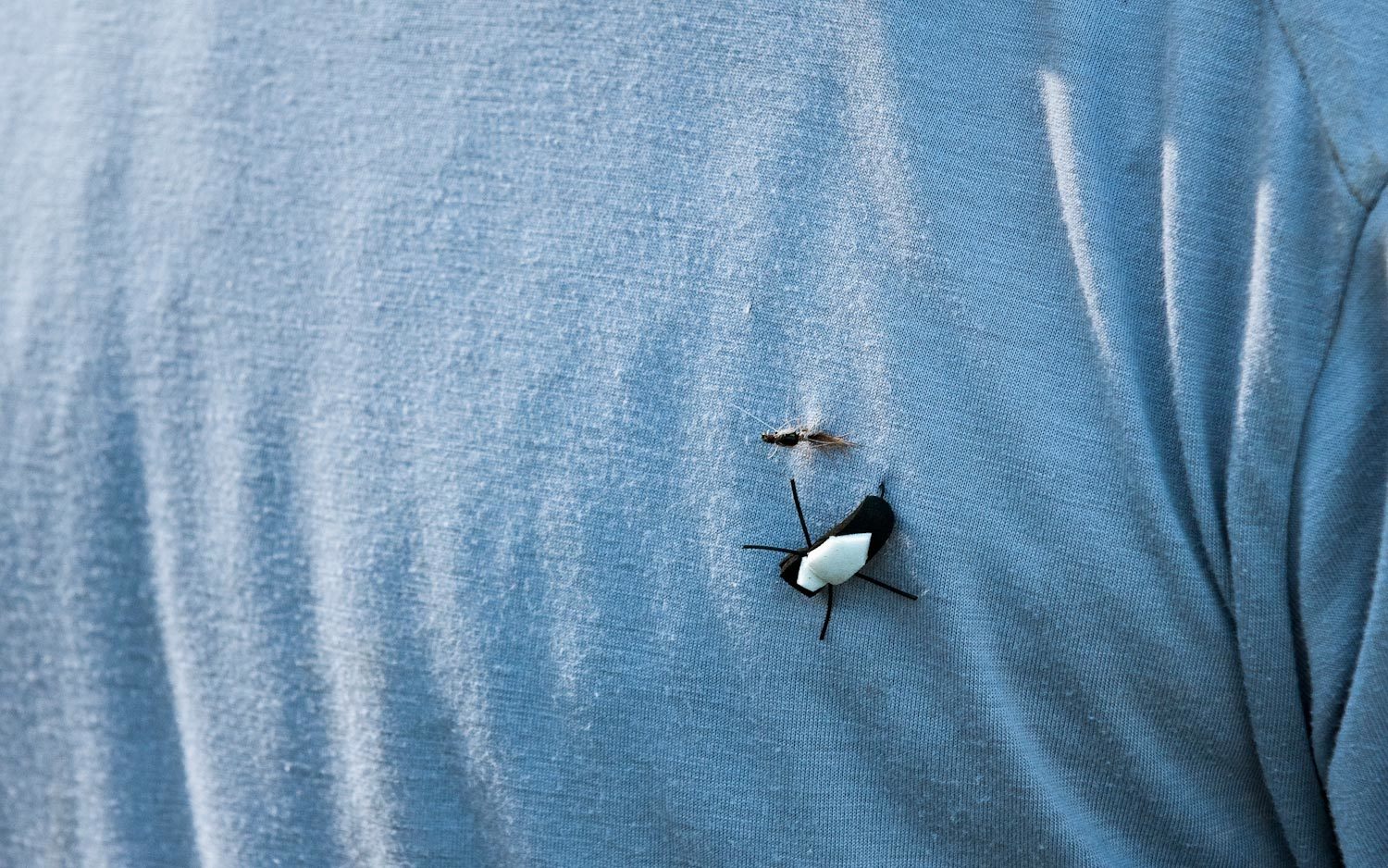
bout this time every year, when I’m starting to get run down from guiding, the terrestrial season arrives, and I’m blessed with a second wind. I’m always astonished at how the presence of terrestrials can make my familiar trout waters seem so fresh and new to me. Even after I’ve already spent hundreds of hours during the season drifting flies through the same riffles, runs and pools. Every day, I find myself more excited about fishing than the last, despite it being one of my busiest times of the year guiding. Thank God for the terrestrial season. I tip my hat to the creator, for he sure did a fine job of planning out the life cycle and timing of the terrestrial season. Yep, life is grand for the fly fisherman when the terrestrials are out. The water and air temperatures (at least where I live) are usually warm enough to leave those stinky waders at home, and the longer days allow us the luxury of staying on the water for a few extra hours.
Is it just me, or do trout seem to have the same look in their eyes as we do during the terrestrial season, pure addiction. I love the fact that it’s not the end of the world if we forget our strike indicators or split shot when the terrestrials are out. The trout often rise
Read More »Tandem Streamer Rigs Catch More Trout
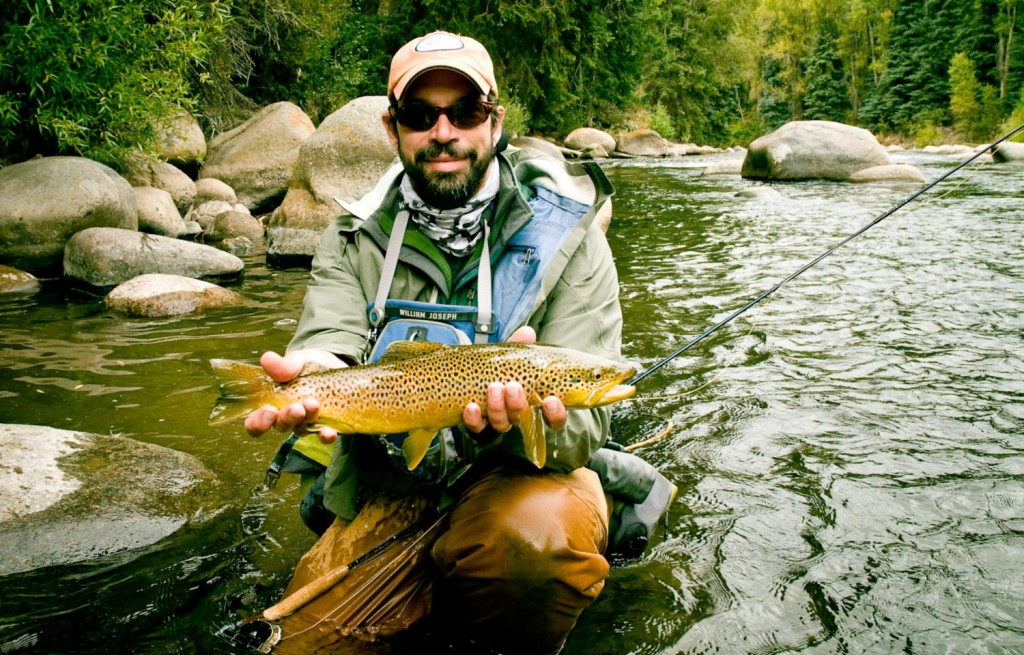
There’s no doubt that Louis and I are both hardcore streamer junkies.
We never leave home without our streamer boxes packed full. One thing we do a little different from some streamer fishermen on the water is fish a streamer dropper rig. Quite often we’ll tie on a nymph dropper off the back of our big gaudy streamer to increase hookups. Big fish are smart, especially during the busy season when their getting pressured, and they can sometimes get a little gun shy eating big streamers. If you’re on the water and you’re getting a bunch of chases or short strikes on your streamer, try tying on a dropper nymph. It will serve two purposes. First, it will be less intimiating to spooky trout. Secondly, it will often tempt a trout to eat that has turned off your streamer at the last second.
Case in point, last year Louis and I were on the Madison River streamer fishing with very little luck. Instead of giving up on the streamer bite, Louis tied on a size 10 golden stonefly nymph dropper and began putting on a clinic. Every fish ate the golden stone like it was candy and he brought numerous twenty plus inch fish to the boat that day. Experiment with
Read More »The Articulated Aggravator and Dubbing Loop Platen
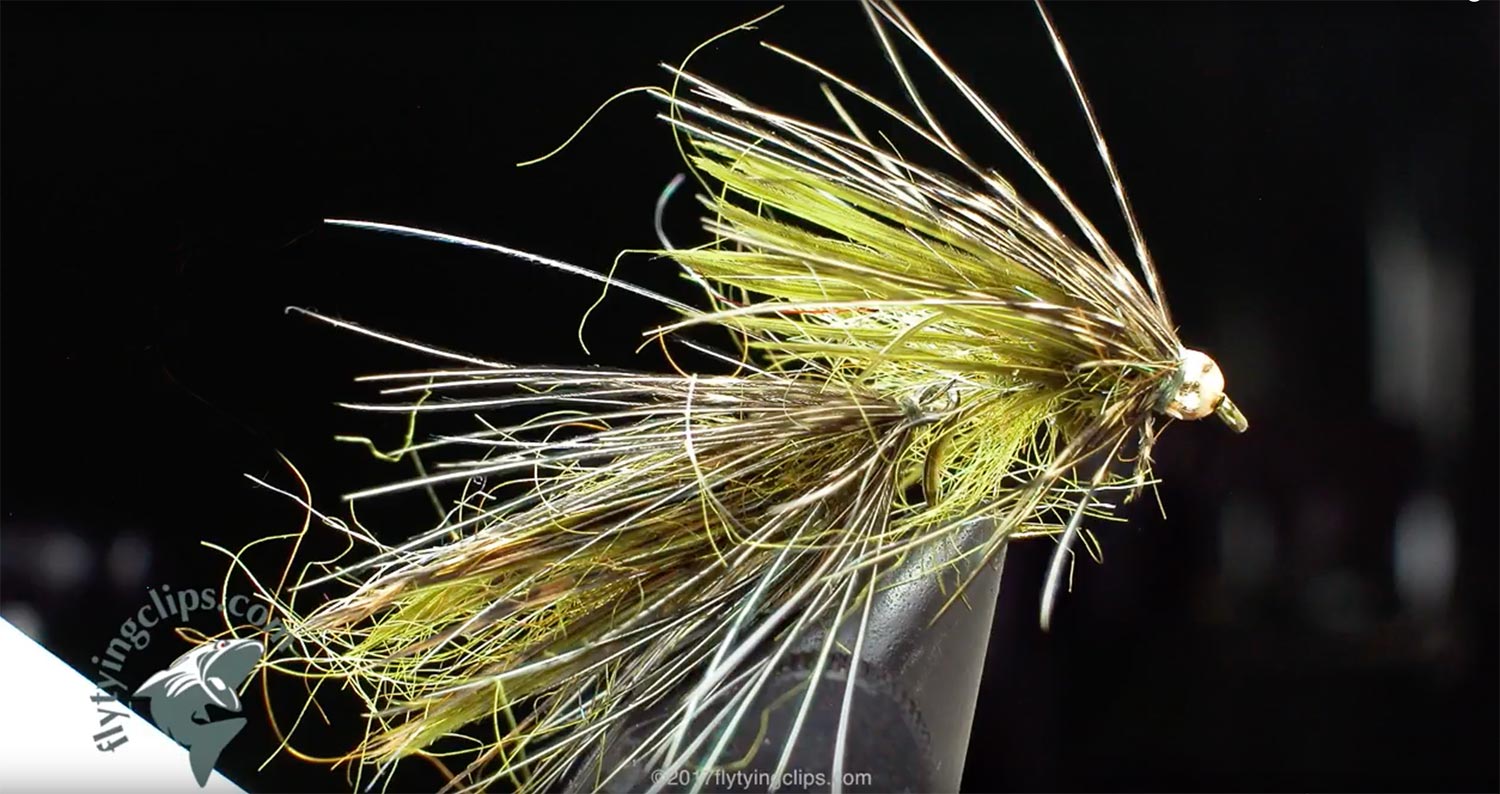
By Herman deGala
As with most of the flies that I design I was trying to solve a problem when I created the Articulated Aggravator.
I was looking for a fly that was different from what I was already fishing for smallies, amongst the riprap of a dam. I needed something I could throw into the face of the dam, which would drop as it followed the face of the dam, where the smallies are often hunting in the rocks looking for juvenile crawdads.
I also wanted the fly to have a lot of movement as it was stripped. I have noticed that the crawdads are not just one color but have a variety colors such as olive, orange, rust and even touches of blue. I wanted the fly to have a variegated texture like the crawdads on these rocks.
I was also looking for a material that was relatively cheap and available. I always get turkey quills, pheasant rumps and pheasant tails from my hunting friends during the season. I have always admired Jerry French’s method for tying composite loops and his use of materials. I wanted to use these techniques but needed a way to scale it down for my target species.
The answer was a simple
Read More »Fly-Fishing: The Stop
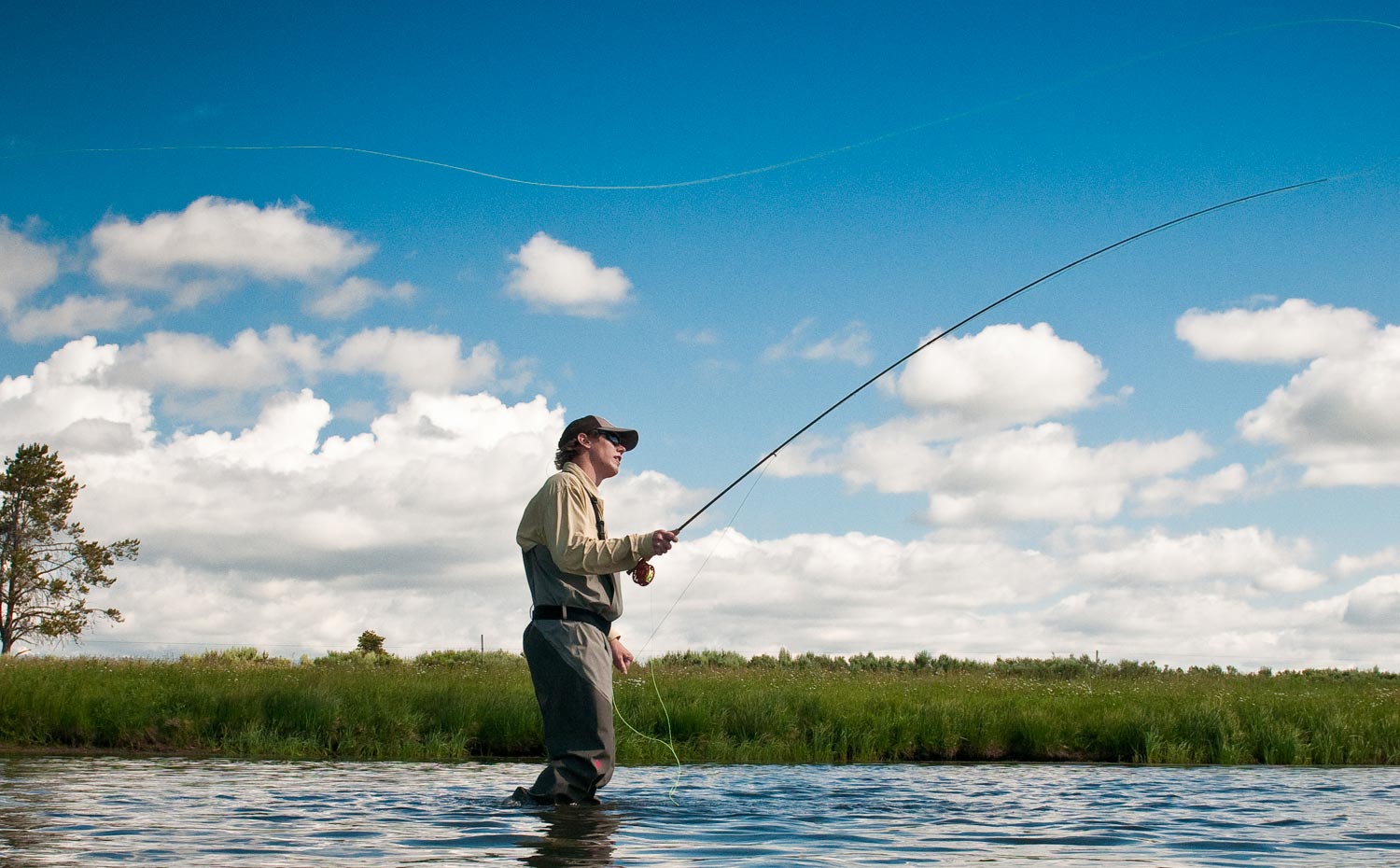
By Louis Cahill
There is nothing more important about a fly cast than how it ends.
There are a lot of moving parts in a fly cast. Plenty of things have to be done right for everything to go perfectly. That being said, you can get away with a lot if you have a good stop.
If your cast feels anemic, your leader doesn’t turn over fully, your loops are big and sloppy, your line lands on the water before our fly, or you’re not getting the distance you want, I’ll bet you five dollars to a doughnut the problem is with your stop. You’re likely doing one, or all, of three things wrong. Use the following as a checklist to see if your stop is all it should be.
Three rules for a good stop.
The stop must be positive.
This is often called a hard stop and I like that term because it captures the feel of a good stop. The casting stroke should accelerate from a soft start to a hard stop at its fastest point. It should not slow to a stop and once it stops it should not falter. It should feel as if your hand
Read More »Get A Better Grip On The Spey Rod
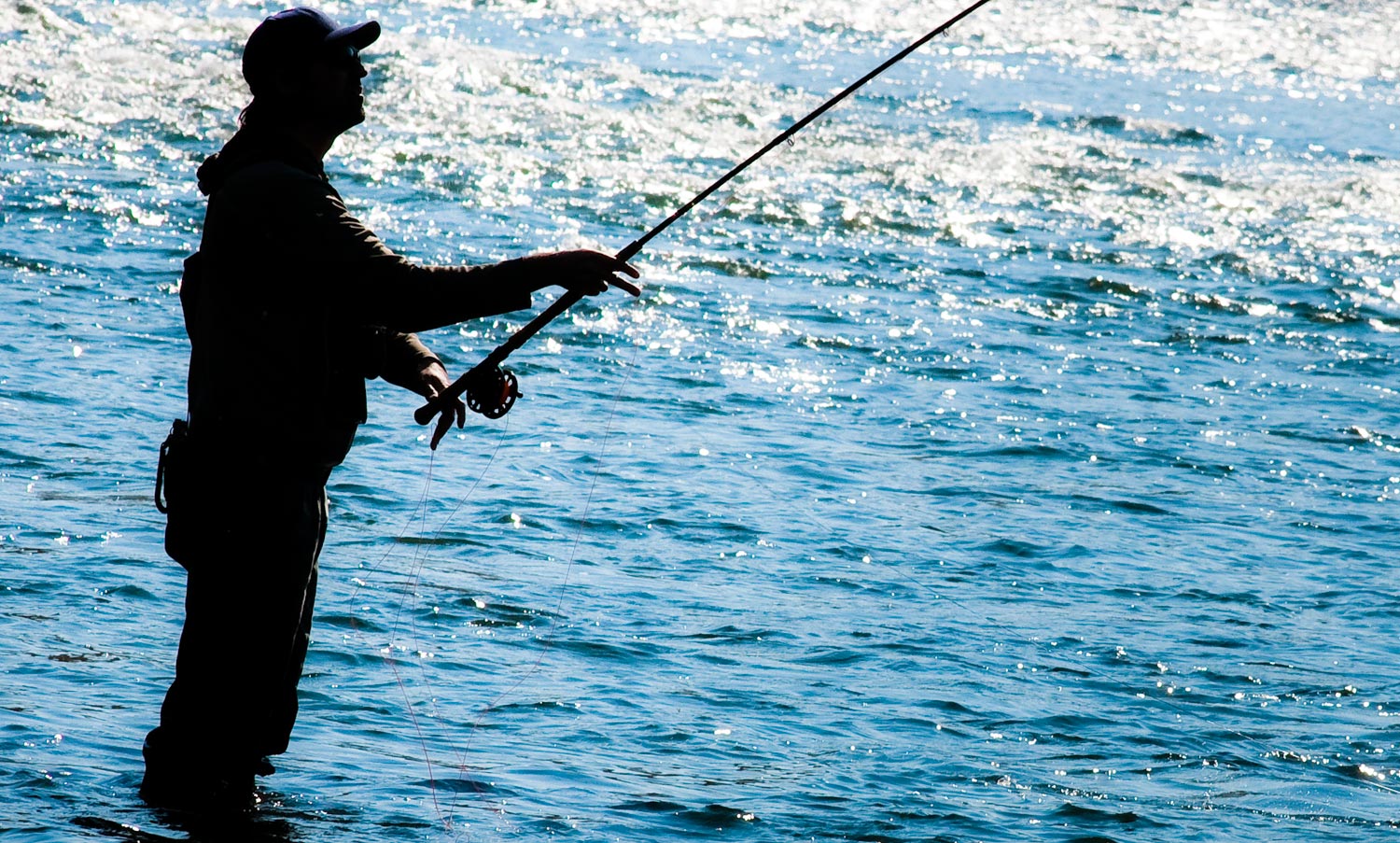
ALL FLY CASTING IS ABOUT CONTROL AND TIMING, NOT POWER.
This is never more true than in Spey casting. Perhaps because there are more moving parts to a Spey cast, rod and line control are crucial. This is especially challenging for the beginner whose muscle memory is only just developing. Often a cast will “break” for no reason. That is to say that, all of a sudden that double Spey you’ve been throwing all morning just doesn’t work any more. Often the reason is a loss of control.
Here’s a tip that will help those of you who are new to two-handed casting maintain control. The first step in a controlled cast is the proper grip. It’s something that doesn’t get talked about enough. Most anglers who are new to the Spey rod think of it like holding a golf club or baseball bat. A familiar tool for most of us, but the Spey rod is quite different and so is the proper grip.
Hold the rod with your finger tips. A gentle grip is all that’s necessary. Using your fingertips accomplishes two things. It keeps your arms relaxed, as you are not tempted to put a death grip on the rod. A relaxed posture is important for fluid movement. Gripping with your fingertips also engages a different set of muscles. Muscles, which are tuned to fine motor skills like writing.
The result is a casting stroke that
Read More »Fishing New Water
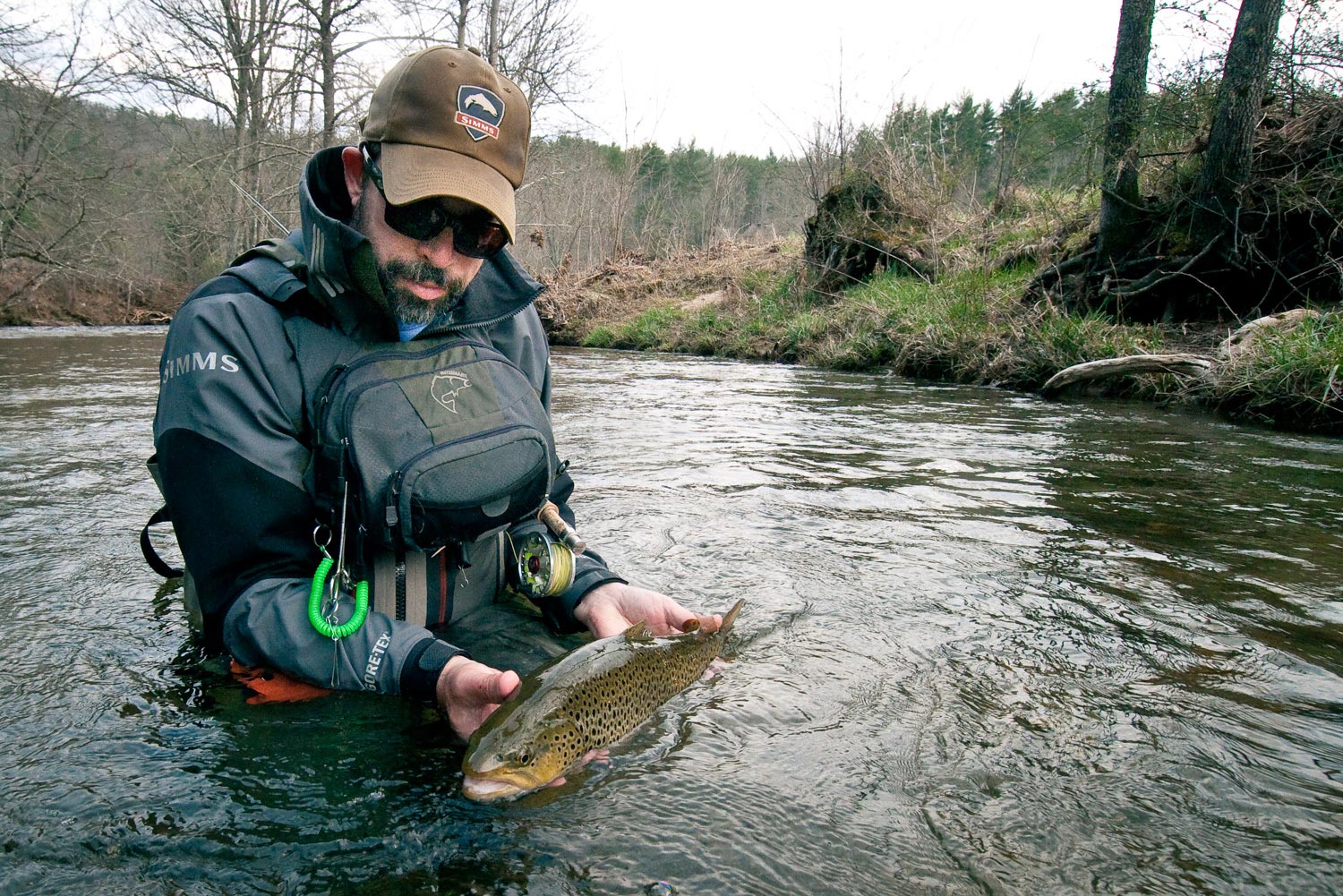
By Jason Tucker The time has come in my life where I want to expand my horizons. I want to light out, free myself from the confines of my routine, my local area, my set habits. It’s true that there are still many rivers, runs, hatches and fisheries I have yet to explore in my native Michigan, but the world is a big place. There’s a lot of water out there. While there are worse things in life than exploring Michigan’s water, it would be a shame to go through life without experiencing other places. My interests and aspirations are as varied as classic Western fishing in Wyoming, Idaho and Montana, or remote brook trout in Labrador and Ontario, to bonefish on the flats of the Bahamas and Oahu. Somewhere in the back of my fantasies lurks one fish, the permit. That may be a bit down the pike, but someday. I hope. I recently had the opportunity to get out of Northern Michigan for a few weeks and head south, get out of the cold for a while. This winter isn’t as bad as the last, but it’s still pretty bad. I got the invitation to go spend the winter in Georgia with friends, and so I took them up on it. The problem is that they are not fly fishing friends, a character flaw that I had to overlook. A big draw for me was the idea of being able to explore new water that is fly-fishable year round. I’ve never caught a trout on a dry fly in January and the thought appealed to me. For me Georgia is a blank slate. I know they have trout streams and even some native brook trout in the northern mountains, but I personally associate the south with catfish, bream … Continue reading
Read More »A Powerful Fly Cast Is All In The Thumb
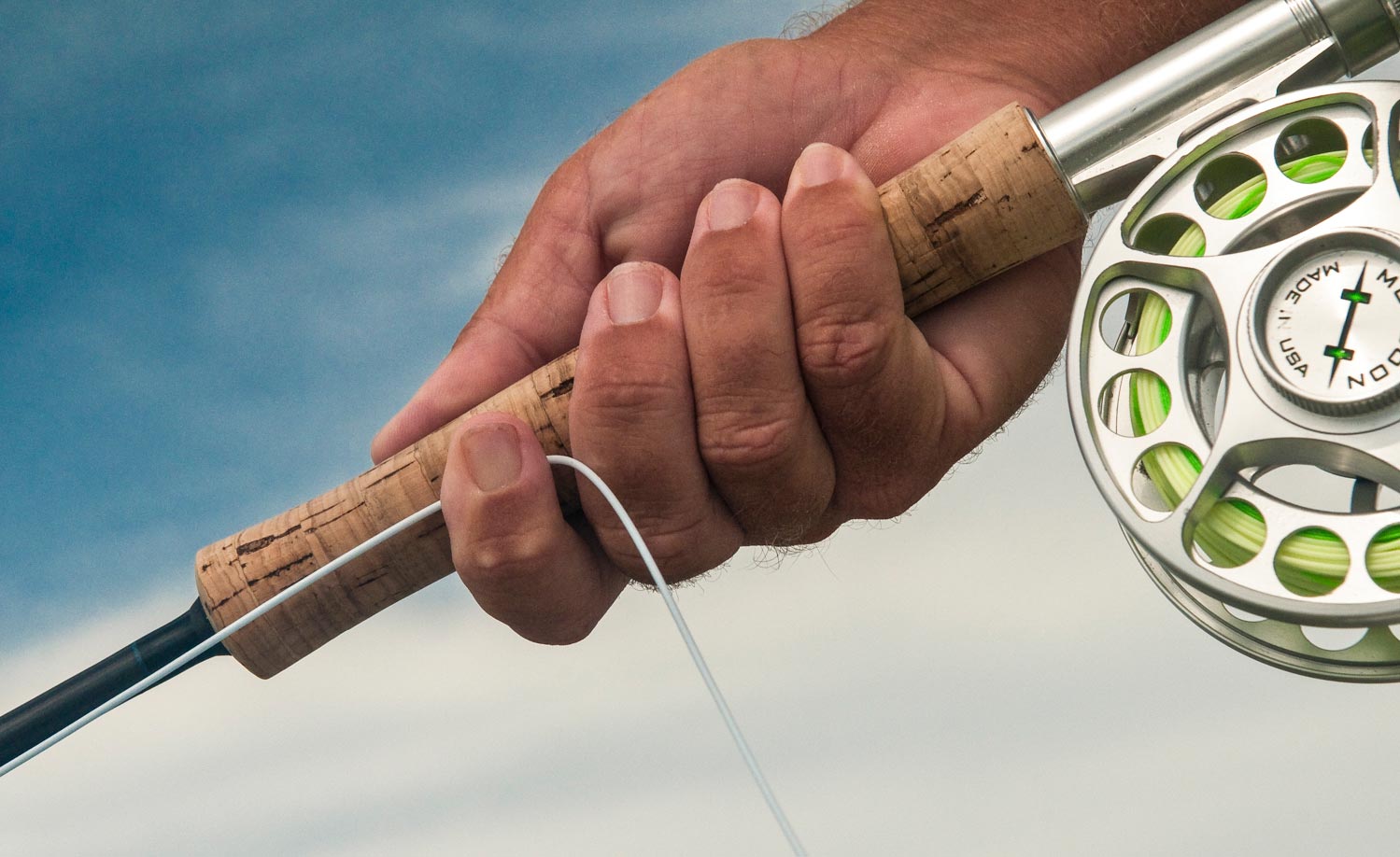
PICTURE YOURSELF GRASPING A BROOMSTICK AND DRIVING IN A TACK WITH YOUR THUMB.
I get the opportunity to work with a lot of anglers who are making the transition from freshwater fly fishing to saltwater. Not surprisingly, most of them struggle with generating the casting power needed to deliver a good presentation in the kind of wind often experienced in flats fishing. Almost everyone has the same pesky problem. They try to generate a more powerful cast and everything breaks down. The problem is not in their arm or elbow or wrist, but in their head.
It’s a problem of understanding the mechanics of the cast. It seems logical to think that more power in means more power out and I guess that’s true but there is a common misconception about where that power is coming from. Most anglers, when trying to add power to a cast, focus on the fly or the line. They visualize throwing that line to the target. The result is a casting stroke that resembles a pitcher throwing a baseball. Including the wind up in the worst cases.
This imagined model of throwing a static object puts all the wrong physics in play for a good fly cast. The resulting casting stroke relies too heavily on the arm and takes the rod out of play. Our instinct tells us to throw harder but the arm is a poor tool for throwing a fly line and our cast fails. The answer to a powerful fly cast is timing and technique, not power.
I’m going to give you a simple tool to help generate a powerful cast but first let’s look at the mechanics.
The fly cast is all about the transfer of energy
How To Get High Line Speed
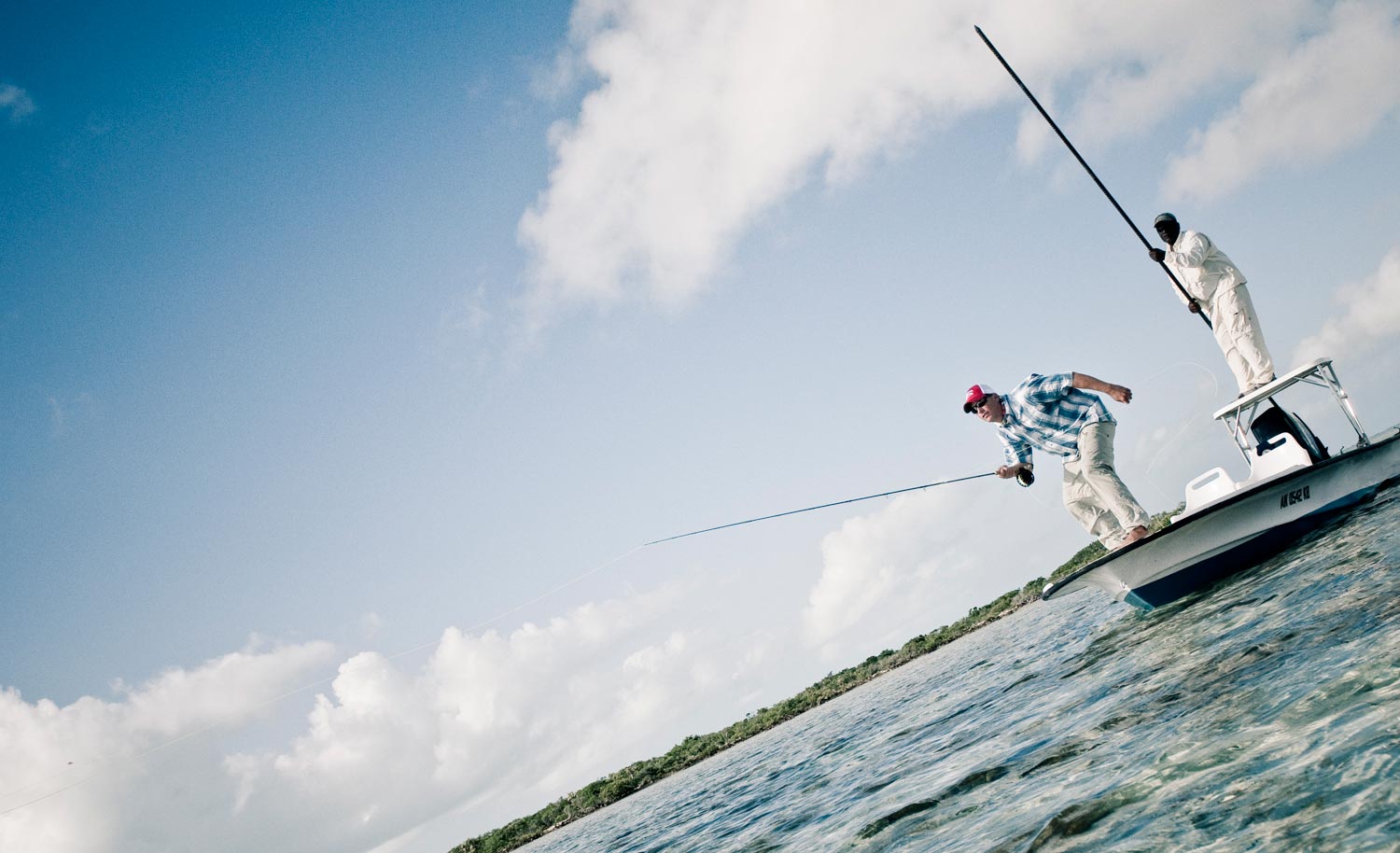
Casting in the salt is demanding at times, to say the least.
To help fight those strong winds that affect your distance and accuracy you have to add as much controlled power as you can to the cast. This is absolutely crucial.
Having high line speed helps you to stabilize the line in the air during casting. This helps in your accuracy, distance and gets the fly to the fish quicker. Increasing your sense of urgency and your intensity will help up your line speed big time. Many times in the salt you are battling time as well as wind. You have a limited amount of time before the fish spooks or moves out of casting range.
Your strength is an important factor in high line speed as well. The stronger you are, the more power you can apply to your cast. You will get out of the cast what you put into it. If you push the gas pedal down a little you go 30mph. If you push the gas pedal down a lot you go 90mph.
When the wind is blowing 20 knots or harder you have to push the pedal down hard! Get that fly line moving fast and casting in those tough salt water winds will be much easier. But remember we are talking about controlled power and the only way to apply control and power is to practice. Just like the cast, you get out what you put in.
Let’s cover some other tips that will help increase line speed.
BEND YOUR KNEES & SPREAD YOUR STANCE
Bending your knees and lowering your center of gravity helps in a couple of ways. It gives you balance on the boat and allows you to apply power from your legs into your core. The power from your core will then be transferred into the cast.
edit-2490This picture will help to show
Read More »10 Tips For Targeting Rising Trout With Terrestrials
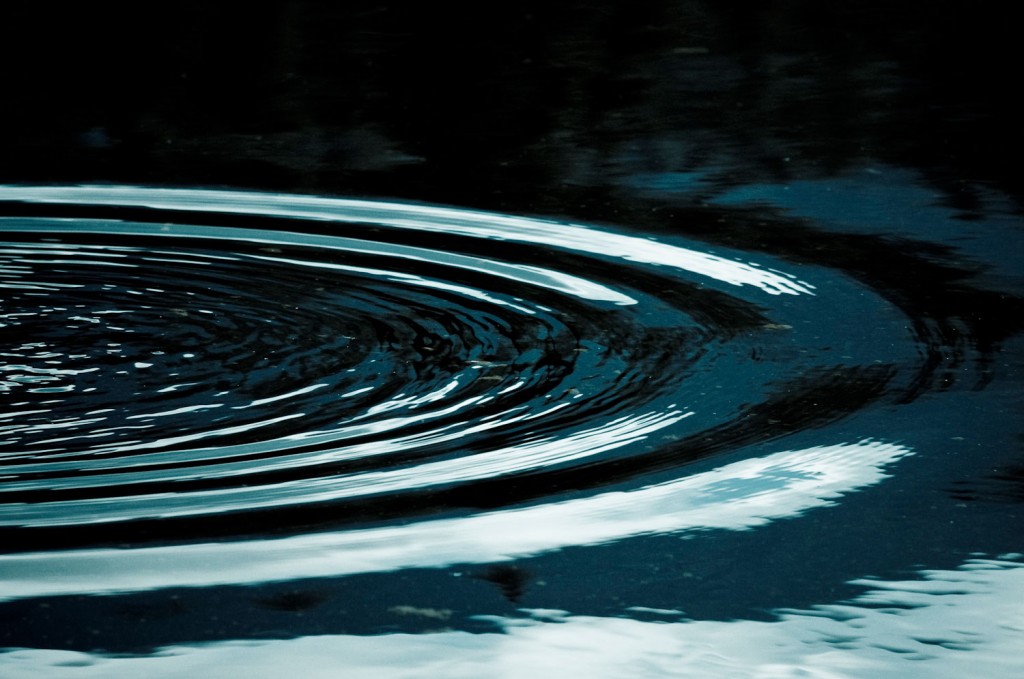
One of my favorite times of the year to fly fish for trout is when I’m able to target rising fish with terrestrials.
It’s always a breath of fresh air when I’m able to leave the nymph box at the truck in exchange for my terrestrial box, that’s overflowing with stacked foam and rubber legged imitations. I love nothing more than seeing trout come up and devour these patterns on the surface. Terrestrial fishing can be some of the easiest trout fishing of the year, but occasionally it can get technical, especially late season, when the fish have grown accustom to spotting out our terrestrial imitations.
Below are ten tips that should help you bring more fish to the net when targeting rising trout with terrestrials.
Tip 1: Get on the water early. Beetle Patterns work really well at first light, when hoppers can still be inactive, and the low light will help you stay concealed.
Tip 2: Don’t immediately cast to a trout you just saw rise. Waiting 10-15 seconds before presenting your fly will allow the feeding fish to get back into its feeding station, and begin looking for its next meal.
Tip 3: Make sure you present your fly far enough upstream of a rising fish. Trout often drift back with the current to take food on the surface.
Tip 4: Take your time, waiting 45 seconds or longer in-between presentations to a rising fish. Don’t continuously cast over and over to a rising fish. This will often spook or put the fish down.
Tip 5: Don’t stick with the same pattern if you’re getting refusals or the fish are ignoring your fly. Change out the size or type of your terrestrial pattern.
Tip 6: For Flat slow moving water, o
Read More »